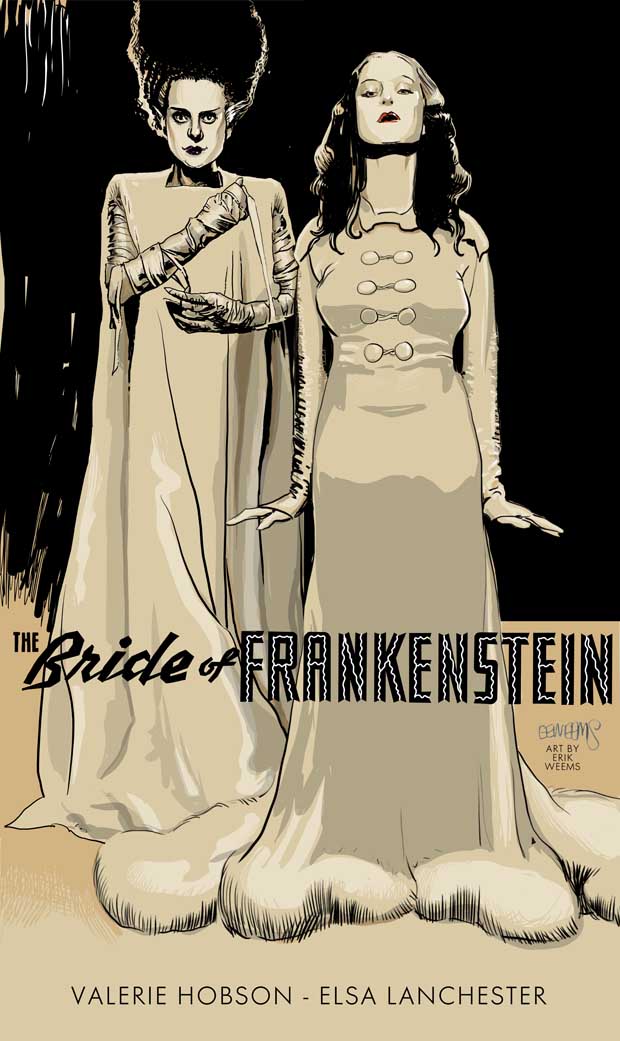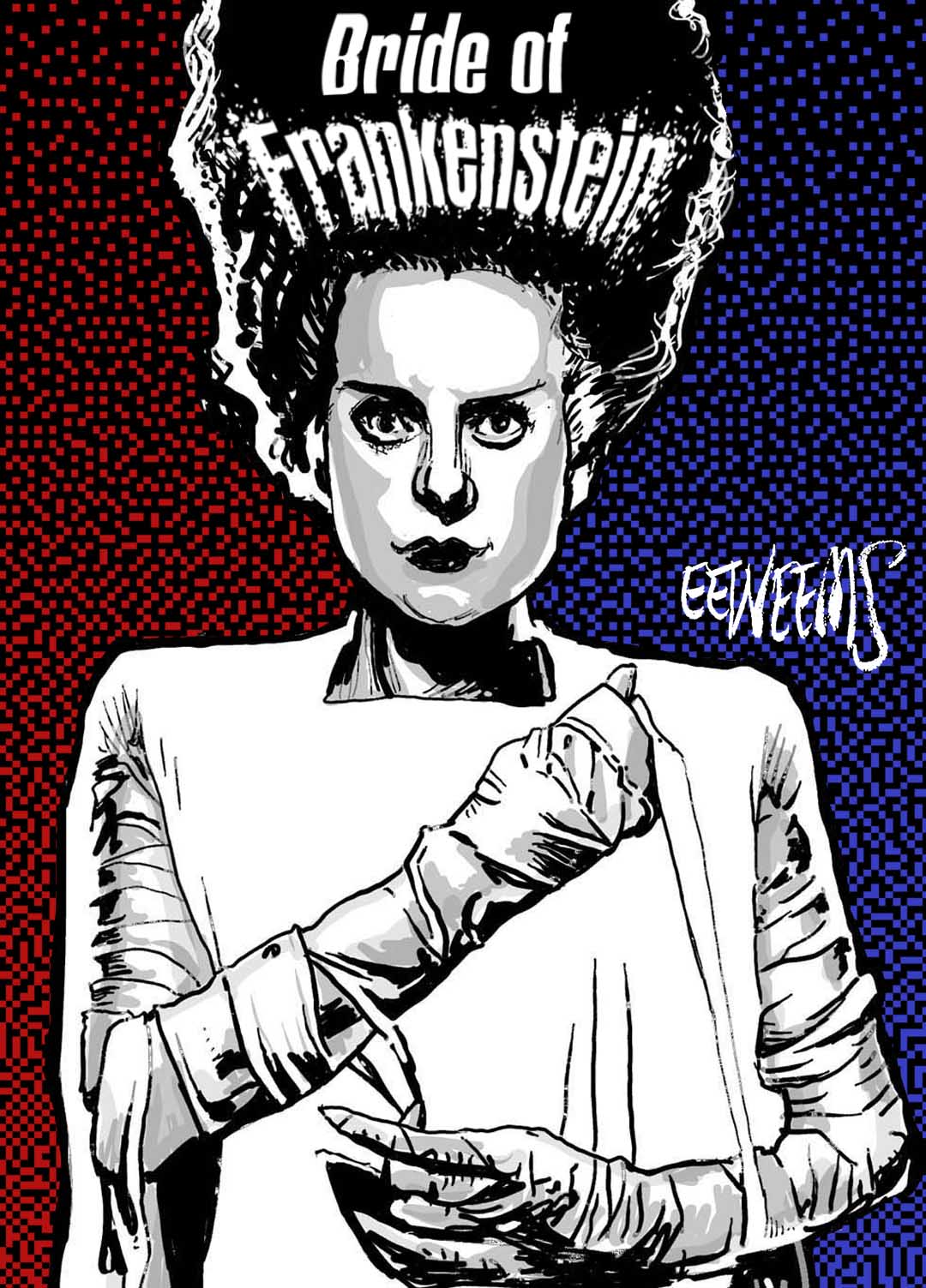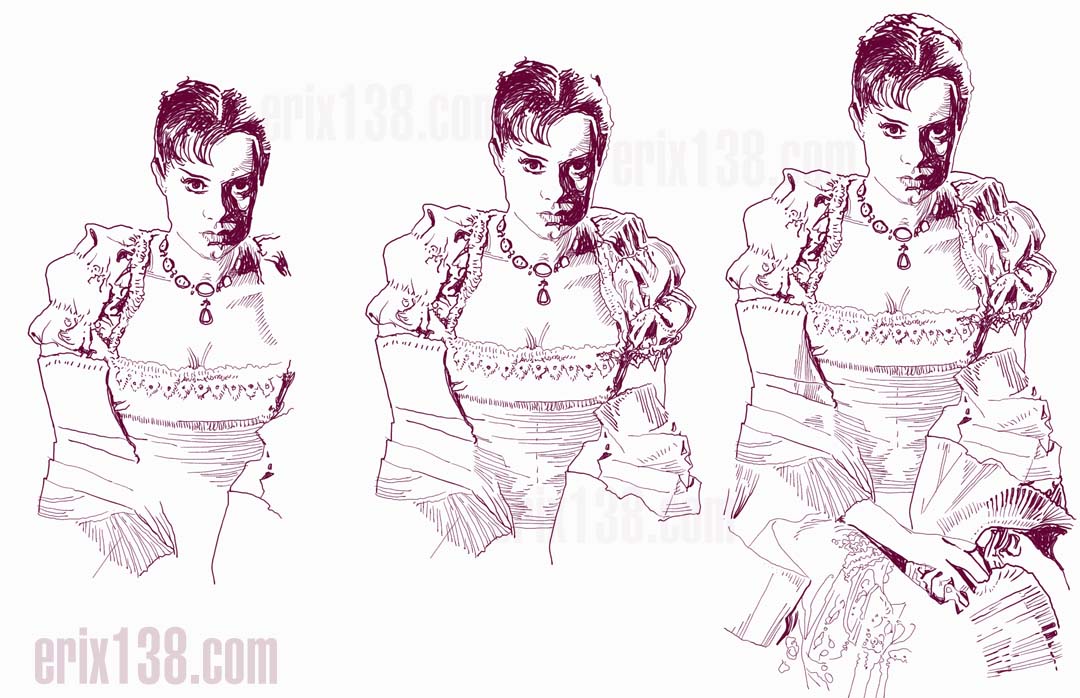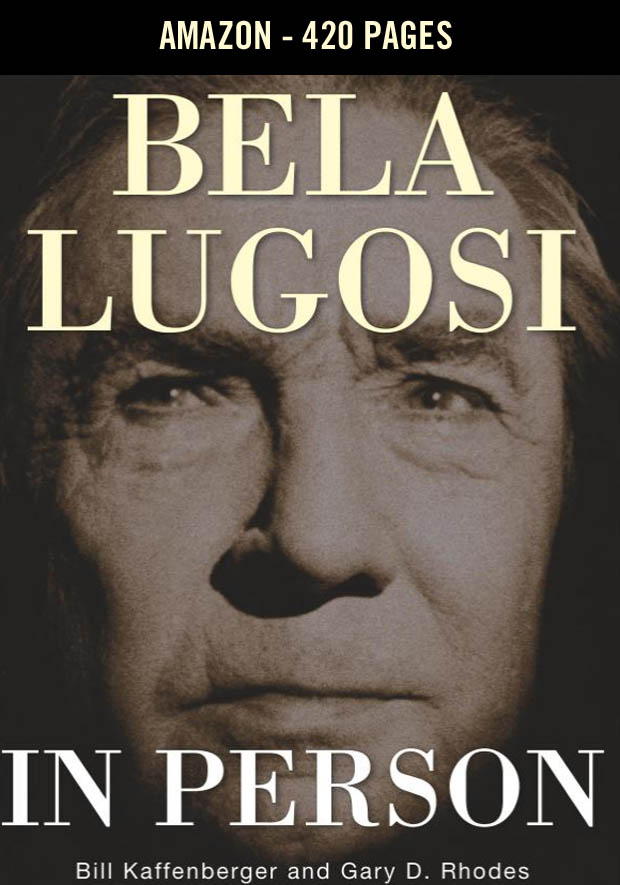Bride of Frankenstein 1935
Bride of Frankenstein - Released April 19, 1935. Directed by James Whale
The distance between the original James Whale directed Frankenstein of 1931 and the sequel (also from Whale) a few years later is immense. Both Frankenstein and Bride of Frankenstein feature Boris Karloff as the titular monster, expanding and improving upon his earlier portrayal. But the name itself is based on a misunderstanding, since in the original Mary Shelley novel named Frankenstein the name only applies to the scientist stitching together cadavers. This is completely contradicted by the prologue of this sequel film which has Lord Byron calling the monster "Frankenstein" and is a concession to how the first film had impacted so deeply into pop culture that by 1935 the name applied to both the scientist and the monster.
The most significant change between the two movies is how James Whale went from the full-bore, no-apologies dark gothic story of the original 1931 production, which features a simple straight-forward linear story about the creation of a monster and the resulting disaster, to the nuance and humor of the sequel which isn't as simply told and has tendrils of plot that run off into a number of other directions.
In Bride of Frankenstein, Whale utilizes the multiple story lines and subplots to tell another story about creating a person (this time the 'bride') from pieces, and of how that goes wrong, but along the way also tells of how the monster from the first film has continued to develop. Karloff gets to humanize the monster to the point he is talking and interacting in a (failing) effort to find human companionship, the verbal powers being something the actor himself said elsewhere didn't believe was appropriate for the character, but nonetheless a halting, almost childlike dialogue is what we get on screen. This melancholy of loneliness and alienation is combined with the artifice of Whale's humor (probably best represented by giving little showcases to Una O'Conner and Ernest Thesiger) which means we get both the tragic Henry Frankenstein (Colin Clive) dealing with his sublimated powerlessness (quite a change from his 'god-like' powers of the first film) to Dr. Pretorius (Thesiger) but there is also a lot of in-jokes that don't disrupt the story, but certainly add a layer of goofy jokiness to the precedings. How director Whale can get this all to balance without having the humor destroy the gothic or the gothic render the humor too stupid to laugh at, is an example of how carefully he constructed the movie and how much effort went into the editing, which, according to stories by crew members, meant Whale used almost everything he shot, piecing it together step by step to get the complete display of his ideas on the subject (they're certainly not Mary Shelley's!) so that we get everything from horror to comedy in a seamless, smooth whole.
Dr. Pretorius takes the lead in "meddling in things that man should leave alone" and Colin Clive's Dr. Frankenstein can only sadly look on as the same old hubris leads to the same old result. Whale spends some time in having us watch Thesiger and it seems to certainly interest him more than the threatened relationship between the new Mrs. Frankenstein (a young Valerie Hobson with an avalanche of hair) and Clive's "I'm sure this is going to blow up in our faces" older and wiser Doc Frankenstein. Clive's Frankenstein looks to be on the verge of a nervous breakdown in some scenes, and, in fact, Colin Clive was experiencing one during filming, attributed to a long-fight with alcoholism and tuberculosis that ended his life two years later. That brittle, temerous hold on reality and relunctance to continue making monsters seems bathed in more than acting technique.
Thesiger's Pretorius is an old-hand at misusing other people and also producing life forms in glass jars (like mermaids!), and is driven to create bigger and bolder beings which suits the usual thematic style of just about any Hollywood sequel, to redo whatever happened the first time around but make it larger in the second. But Whale goes further along with this than just the special effects being more elaborate, instead Pretorius is a dangerous nut, and his ruthless contrast to the almost reformed Dr. Frankenstein who is unwillingly going along with the new experiments in monster creation tells you how much James Whale expected Bride of Frankenstein to be the final say in the series (little did he know!) and giving Colin Clive and Valerie Hobson a happy ending was the least Whale could do after all the madness of the two films.
Interestingly, in the first film of the series, we're pulled along by Clive's scientist's crazy obsession, in the sequel it is Pretorius who thinks he can pull off playing God, and Karloff's monster is certainly hoping Pretorius can do it because he has put in an order for "a mate." But in a grand circle that started with Elsa Lanchester in the prologue (as Mary Shelley) saying there's more to the tale as she sits by a hearth and begins telling the story to us, we see that at the end she is the hissing, angry monster.

More Elsa Lanchester
More Valerie Hobson
More Boris Karloff
Amazon - Bela Lugosi in Person - 420 pages
Amazon - No Traveler Returns: The Lost Years of Bela Lugosi - 346 Pages
Frankenstein Created Woman - 1967
Frankenstein meets the Wolfman - 1943
Original Page August 7, 2015 | Updated October 28, 2024
What's Recent
- Island of Desire - 1951
- Road to Morocco
- The Devil and Miss Jones - 1941
- Sinners - 2025
- Something for the Boys - 1944
- The Mark of Zorro - 1940
- The Woman They Almost Lynched - 1953
- The Cat Girl - 1957
- El Vampiro - 1957
- Adventures of Hajji Baba – 1954
- Shanghai Express 1932
- Pandora's Box – 1929
- Diary of A Chambermaid - 1946
- The City Without Jews - 1924
- The Long Haul
- Midnight, 1939
- Hercules Against the Moon Men, 1964
- Send Me No Flowers - 1964
- Raymie - 1964.
- The Hangman 1959
- Kiss Me, Deadly - 1955
- Dracula's Daughter - 1936
- Crossing Delancey - 1988
- The Scavengers – 1959
- Mr. Hobbs Takes A Vacation - 1962
- Jackpot – 2024
- Surf Party - 1964
- Cyclotrode X – 1966


